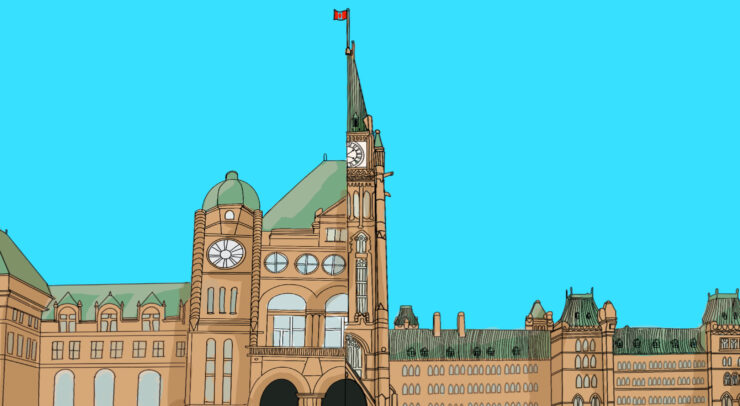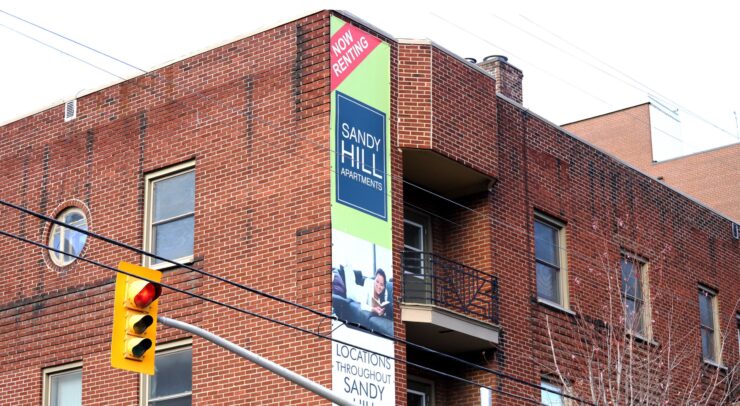Should Ontario follow suit with its provincial neighbour to the east?
Point: A curfew is necessary to slow the spread of COVID-19 by Georgiana Ghitau
On Jan. 5, the Quebec provincial government announced that it would be implementing an imposed curfew on its population to curb the ever-rising new cases of COVID-19 in “la belle province.” In response to being criticized for the drastic measures put in place, Premier François Legault explained that there was a specific logic to the curfew.
“There are far too many people in homes who are going and visiting those who are 65 and over. That’s why we put the curfew at 8 p.m., that allows us to reduce the number of private gatherings,” said Legault in a press conference.
As such, it is important to start watching out for, and prioritizing, the senior citizen population given they make up 80 per cent of hospitalized patients due to their compromised immune systems.
In response to Quebec’s harsher preventative measures, Ontario Premier Doug Ford, was tasked with deciding whether or not the province should impose the same severe restrictions.
Would an 8 p.m. to 5 a.m. curfew aid in significantly reducing the ever-growing number of coronavirus cases? Will it benefit all Ontarians of all socio-economic groups? It is not a simple task. However, being already a year into this global pandemic, we must take any measures necessary to stop the spread and reduce the number of hospitalizations and lives taken by this virus.
At this point, I believe that our best option to curb the spread of COVID-19 would be to also implement a province-wide curfew.
One of the major challenges that we are facing is the home gatherings, more specifically, visiting people over the age of 65. Hopefully by imposing a curfew, it will discourage people from doing so. We must if we want the chance to resume our day to day lives at any point in the near future.
Although Ford decided not to go forward with the curfew, he issued a stay-at-home order declaring a second state of emergency. Under these restrictions, everyone must stay at home with the exception of essential purposes such as going to the grocery store, pharmacy, accessing health-care services, exercising, or essential work. This measure will remain in place for at least 28 more days. Police and by-law officers are tasked with issuing tickets to those who do not comply; jail time is not off the table either.
Times are especially hard right now, however, in order to prevent the healthcare system’s collapse, it is of the utmost importance that we adhere to these rules if we ever dream of resuming our lives. Together, but socially-distanced, we will ensure that this virus does not take more time from us.
Yet with the now terminated discussion of a curfew in Ontario combined with Quebec’s recent 8:00 p.m. curfew, the question of the rationale and effectiveness of this restriction is worth examining.
Curfews can be seen as unfortunate tools, used as a strict response to prevent the healthcare system from collapsing due to risky nighttime social gatherings. They do, on the surface, also appear to work in settings from Australia to China.
However, this should be used as a last ditch effort to curb the spread of COVID-19, as it is a poorly evidenced backed solution.
Counterpoint: An imposed curfew is not necessary to slow the spread of COVID-19 by Donovan Makus
Beyond the shaky case for curfews a greater problem presents itself:
Explaining the “why” behind a recommendation or directive and to not merely rely upon accrued trust or the halo effect of science or medicine is critical. The “why” behind curfew restrictions is attractive in its universality and simplicity, even if evidence is lacking, but it is these exact traits that endanger public buy-in. Ignored advice is ineffective advice.
We know that COVID-19 doesn’t solely spread at night, the reason for the curfew is to restrict behaviour that spreads it. From California to Quebec, this is noted when implementing curfews: instead of using a targeted intervention, a curfew represents a blanket approach intervention with many additional negative consequences.
Someone picking up groceries at 9:00 p.m. or out for a stroll is not the problem, yet they are negatively affected. A curfew could even be counterproductive by forcing people to fit errands into a smaller timespan, with ensuing higher densities (as some epidemiologists noted) or by causing people engaging in risky behaviours to simply start them earlier in the day.
While stemming from good intentions, it’s hard not to acknowledge the paternalistic nature of a blanket curfew and how its very nature places a disproportionate burden on people engaged in minimal to no risk activities.
Any restrictions must be appropriately scaled to avoid broader harm. You wouldn’t use a tractor to plant a daisy, so why do something that will negatively affect more people than a targeted intervention would? We trust public health and politicians to work together to take the appropriate and best steps. Orders that fail the evidence test and fail to address the underlying issues strike at the core of this trust.
A populace that no longer trusts its decision makers will be less likely to follow the good evidence-based advice they propose. This loss of public trust and buy-in is disastrous.
A further issue with curfews is practical, not philosophical. Most people would follow the curfew, but not all, which raises the question of enforcement.
One of the ironies of restrictions is that adding blanket restrictions has questionable effectiveness if COVID-19 is spreading primarily in social gatherings that are already discouraged or legally prohibited. If people are already breaking the law, adding another order is not effective.
Some may argue that curfew enforcement is easier, yet this is questionable. Police in Quebec are already not effectively enforcing social gathering regulations with a tiny amount of tickets issued. Enforcing the existing guidelines should be the first priority. Short of an Australian-style “full lockdown” with checkpoints that is unlikely to be politically, economically, or socially tenable it is hard to imagine a curfew working.
It is also worth noting the extensive public scrutiny in past months on the problems of large-scale police activity. A curfew or lockdown is quite regressive as it would also disproportionately impact lower-income people who lack the transportation options or income to more easily adapt.
We all want the pandemic to end while minimizing its negative effects, particularly in these difficult months as vaccinations progress. Public health directives require trust and public buy-in. The way to do this is targeted COVID-19 control that respects individuals already following evidence-based COVID-19 recommendations, not regressive potentially counterproductive broad stroke measures.






